Celebrate Moths During National Moth Week
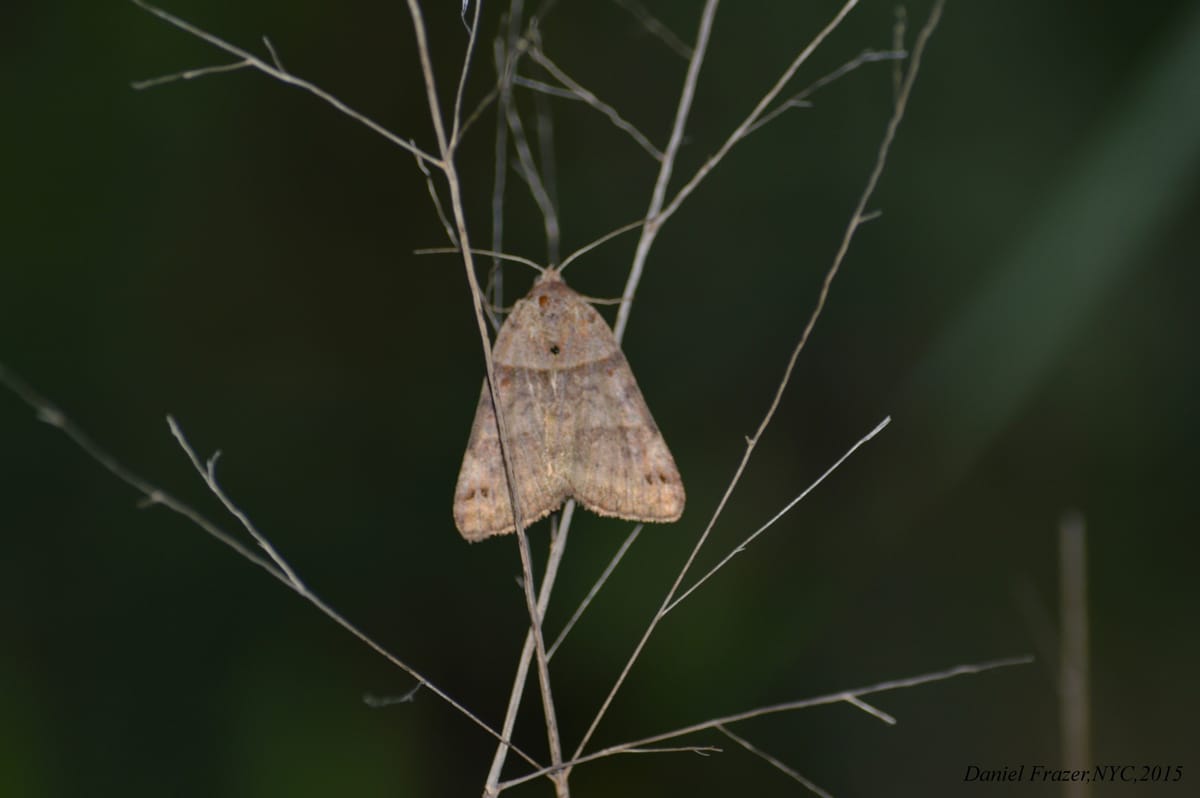
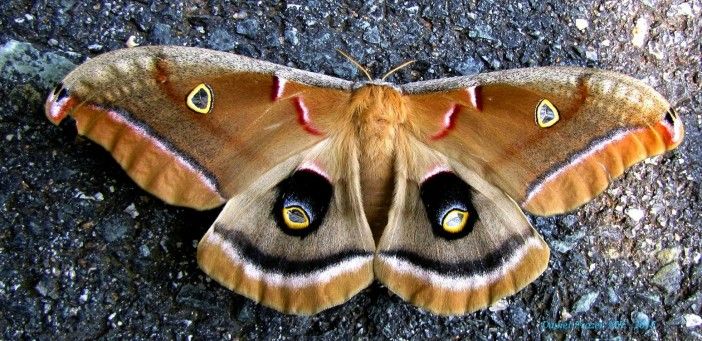
Drunk on light, moths gather frantically ’round the lights at night, which you’ve no doubt experienced during the summer on a local porch or stoop. No one is quite sure why moths are so fixated, but regardless, thousands of “mothers” will be taking advantage of this tendency to find as many moths as they can during National Moth Week from July 18 until July 26, and for the rest of July and August, which is the best time of the year to see moths.
Seemingly more drab than their close relatives butterflies, moths rule our gardens and parks at night. Reviled by some and loved by many, moths and butterflies make up the family lepidoptera, Latin for “insects with four scaly wings” So what makes a moth different than a butterfly? And how can you see more of them? Read on for some fascinating facts about moths, and how you and your family can take part in National Moth Week.
What’s The Difference Between A Moth And A Butterfly?
Simply put, butterflies are diurnal (daytime) with little clubs at the end of their antennae, and they typically hold their wings upright like a blade. Moths do not have clubbed antennae and will often have bushy, thick antennae. In some species, the antennae serve to help determine what sex your moth is. Males typically have bushier, larger antennae than females. Moths generally are nocturnal, and while often not as colorful as butterflies, they’re typically marked with deeper, more nuanced patterns. The vast majority of moths keep their wings folded outward.
Brooklyn is home to approximately 80 species of butterflies and many, many more moths. Insects, flamboyant as lepidoptera even, are notoriously hard to track, distinguish, or classify so it is difficult for scientists to use specific numbers.
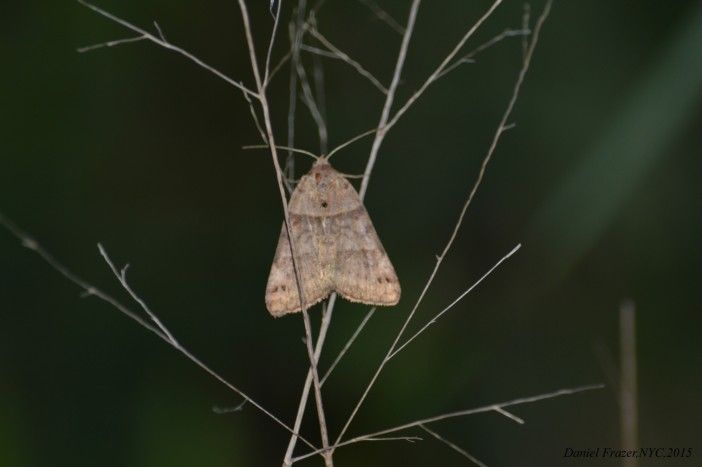
Size Matters
Some moths are no larger than a grain of rice, while some are bigger than birds! Moths, like all insects, represent the greatest diversity of the animal kingdom. Like butterflies, they go through a cycle from egg to caterpillar to pupa to adult. Interestingly, many caterpillars actually grow heavier and longer than they will ultimately become as adults — many caterpillars go through a process of “drying and shrinking” before ultimately pupating. While the cocoon or pupa seems inactive from the outside, internally, there are thousands of chemical and cellular changes helping transform the caterpillar into a moth or butterfly. The average pupa or cocoon will open within 10 to 30 days if the initial transformation happens early enough in the summer, however, many of the larger moths will remain in their cocoons or as pupa throughout the summer and winter, eventually emerging in the spring to begin the life cycle again.
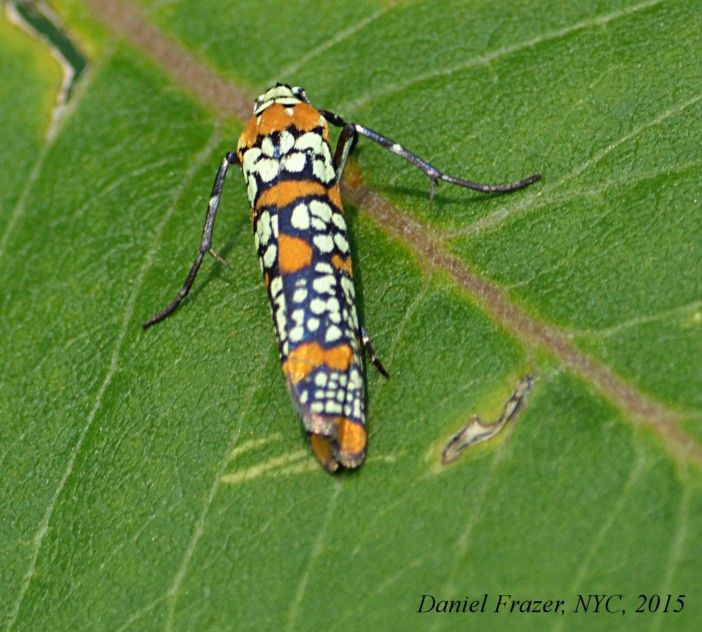
Pupa Or Cocoon…In My Underwear?
Have any real silk garments? Silk is in fact an insect product. After honey and food coloring, silk is the third most popular insect-derived product that humans use. A moth is said to be in a cocoon when they wrap themselves in silk fiber at the time of pupating. Some moths do not create silk and simply pupate, which is closer to the butterflies’ chrysalis. Silk is an extremely powerful protein that helps insulate and protect the developing moth. About 5,000 years ago, humans learned to harvest the evacuated cocoons of silk moths to produce a wide variety of strong, warm garments. In its raw state, most silk moth cocoons are coarse to the touch and require considerable combing and boiling to be recognizable as the high-priced fiber. Interestingly, silk moths do not develop with mouth parts once they’ve left the cocoon and typically live less than a week.
Brooklyn is home to several silk moths, most notably the huge Polyphemus moth and Luna moth.
Smarter Than They Look
While difficult to ascertain the intelligence of an animal, especially an insect, moths are equipped with excellent lines of defense against predators that range from clever disguise to out right intimidation. Many moths have evolved to resemble bird poop! This allows them to cleverly blend in during the day in order to avoid eventually becoming bird poop themselves. Many moths in North America have large “eyes” on their hind wings which seemingly imitate the large predatory eyes of owls and thus scare their number one predator, bats. While it’s unknown how this would’ve happened, it’s believed that long ago a random pigmentation may have become exploited through evolution that allowed for this remarkable demarcation.
Moths are so in tune with bats that they’ve even learned to jam their sonar. In order to find their prey, bats emit high pitched clicks that reverberate against objects around them. Bats are able to judge the distance and even size of an item with this system. However, many moths are able to jam the bats technique by making their own high-pitched clicks, which cause considerable confusion to the hungry bats. In some areas, moths have evolved to become such efficient bat evaders that they’ve caused bats to seek out new hunting grounds.
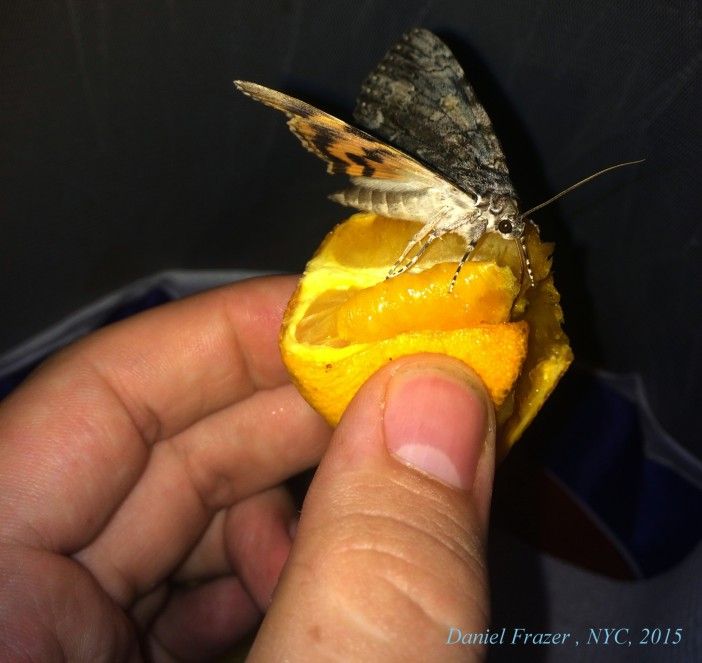
How Do You Use That Thing?
Moths, like most insects, have many anatomical surprises.
Most obviously, moths have wings. A moth leaves its cocoon or pupa with very small, shriveled-looking wings. In the first two hours of adult life, the moth must dry its wings and slowly pump them to fill them with fluids in their abdomen.
While some moths do not eat, others are quite voracious nectar eaters. Moths, like butterflies, use a long drinking-straw-like appendage called a proboscis. The proboscis is used to suck nectar from flowers and the juices from fruit. A moth or butterfly is even more peculiar in that they taste with their feet! A moth may land on a flower and know immediately from taste alone if this flower is a good source of nutrients.
Moths often appear hairy. While not hair, these furry projections are elongated scales that serve numerous functions, one of which is to insulate the moth at night and to appeal to their mates.
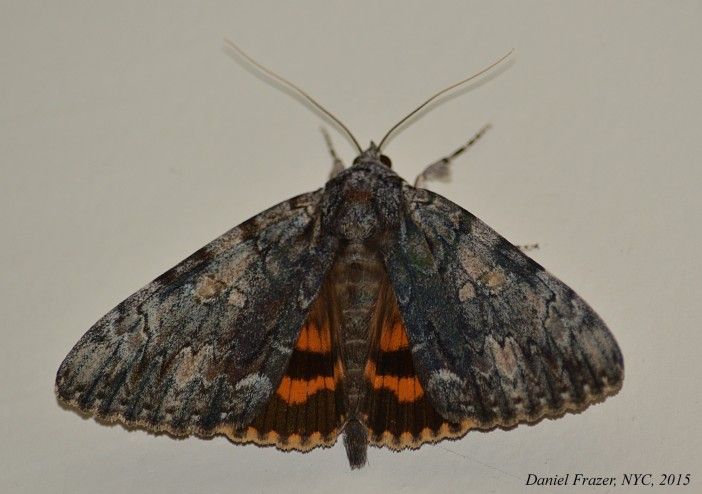
How To Find Moths
While moths are everywhere and far more numerous than you might realize, there are ways to find more moths! Starting about 10pm, especially on a humid night, stroll to a dark area that might have on one or two very strong lights. It would not be surprising to see as many as 30 distinct species on one wall.
Some great spots to casually see moths are along Prospect Park’s south side, walking toward Green-Wood Cemetery. Along this wall are several powerful lights that have pulled in close to 40 species one night. Another favorite spot is along the walls of the Salt Marsh Nature Center in Marine Park. The Salt Marsh hosts a wide variety of native flora and probably represents the highest diversity of moths in Brooklyn.
If you’re really into it, here’s a simple and fun way to see even more moths: For around $10, purchase three battery-operated LED stick-on lights and affix them with tape or clamps to a three-panel white science fair project board. This simply designed portable system has allowed me to travel to even darker spots with fellow mothers and has really brought in some fabulous results.
Some mothers who are really dedicated to their hobby will create a sheet suspension system with a mercury vapor lamp connected to a portable generator. While this is a very successful setup, it’s quite costly.
Don’t feel bad if you can’t identify all of your moths! Moths are probably one of the trickiest of all insects to accurately identify every time, however, you can still delight in the many and varied fascinating colors, shapes, and patterns. Photographing moths can be a little difficult since you’re out at night, however, moths do not mind flash photography and are surprisingly cooperative with cameras being only inches away from them.
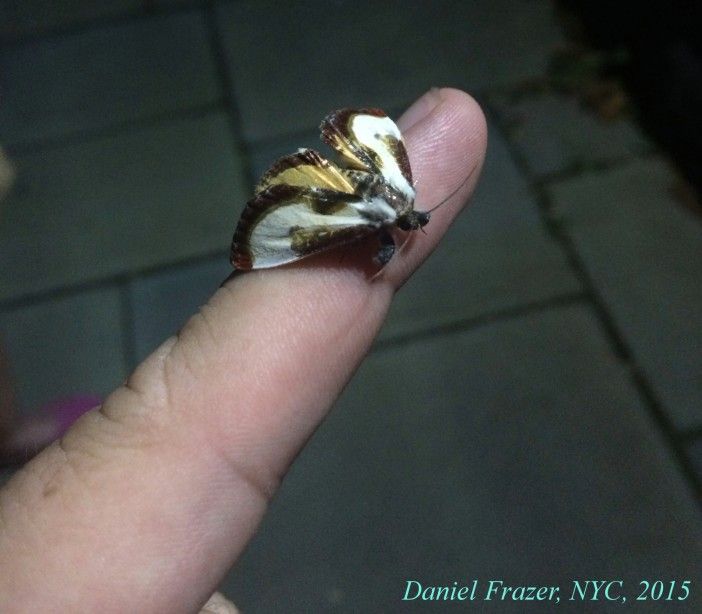
Why National Moth Week?
National Moth Week is a global event designed to help spread the many joys and wonders of moths to people everywhere. While you may not think moths need or deserve all this fanfare, they’re essential pollinators and fulfill many important niches in the animal kingdom. Moths can even help serve as an indicator for how healthy the air we breathe is. National Moth Week also aims to help document unique species numbers to get a better feel for populations in a given area.
Moths, like many insects, are subject to great misunderstanding and a general lack of appreciation. Yet, in many Native American cultures, moths were seen as symbols between the spirit world and as an attempt for loved ones to reach you from the after life. The next time you see a moth, have a good close look at one of these peaceful creature: admire the fine hairy scales that cover their modest wings, their silly proboscis which they use to feed, and their large, gentle eyes reflecting their much-loved light, then check out this site for one of the most comprehensive identification catalogs available for moths to learn more.
Daniel Frazer is an amateur naturalist and birder born and raised in Southern Brooklyn. Daniel spends an inordinate amount of time birding around Brooklyn and is hoping to see every bird species this city has to offer. He writes a “wildlife and nature” column for us and for our sister site, Bensonhurst Bean. See more of his articles and photos here and here.




